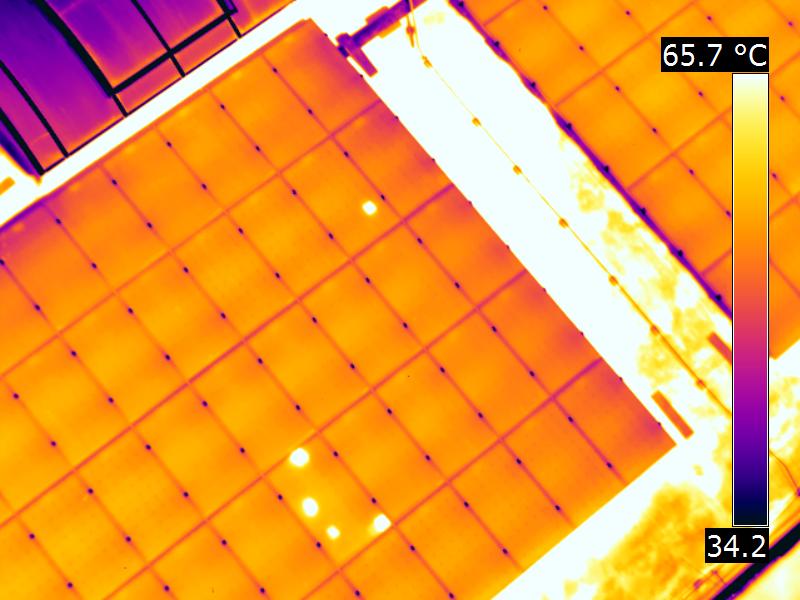INTRODUCTION
Today, one of the most critical demands to advance research and improve human performance in many areas is renewable energy in any form. The globe is experiencing a tremendous rise in population and GDP consumption, prompting us to search for alternative energy sources in an effort to strike a fair balance between our requirements for energy, our ability to grow, and our ability to protect the environment. Solar, hydro, wind, and geothermal energy sources all provide ample energy. Since they never run out, require little upkeep, and are relatively cheaper, solar and wind energy in particular have emerged as the favorites of ecologists and new age statisticians worldwide.
The major countries in Europe, Germany, France, Spain, and Italy, made significant investments in solar energy in 2019, resulting in an 81% rise in solar installations across the EU, establishing solar energy as one of the most promising future resources. The future of India and the rest of the globe lies on solar energy.
The decrease in capital costs is one of the main forces behind the adoption of new emerging resources. This article seeks to explain to the reader how drones might improve solar energy planning, construction, and maintenance with greater profitability and efficiency. There are numerous ways to capture solar energy. Utility-grade plants and rooftops are the two main methods of capturing solar energy. Both of these uses for drones seem feasible, but for the moment coming, let’s emphasize on utility-grade plants since they have extensive use in India.
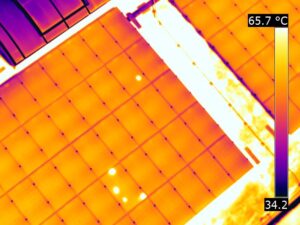
SOLAR POWER IN INDIA
Given that India receives 2856 hours of sunlight on average every year, it is not surprising that the administration desires to capture and harness that energy. The Indian Government unveiled plans in 2008 with a goal to reach the capacity for 20 Gigawatts (GW) of solar power before 2022, with support from the Indian Technical and Mutual Development (ITEC). Surprisingly, India reached that number by itself in 2018. The government then established a revised goal of 100 GW of solar power by 2022, with 35 GW already operational. We must build 65 GW in the upcoming years in order to surpass India’s ambitious goal of constructing 100 GW.
Solar energy being the most ecofriendly and sustainable, more and more organizations and people are wanting their installations. The augmented ultimatum for solar inaugural among entities and consortia brings logistical difficulties. Substitutive casing and mass-market evolutions across the country are progressively inducting rooftop solar panels. There’s also an ascent in demand for solar energy estates (or photovoltaic shops) to aid support neighborhoods by metamorphosing a grand volume of the sun’s energy into consumable electricity.
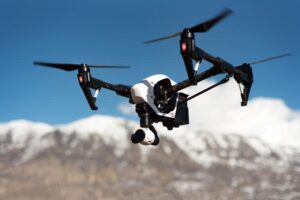
MAJOR 5 CASES IN USAGE OF DRONES IN SOLAR OPERATION
We have understood how solar has basically developed and created a new space in newer technologies. Let’s get deep and understand how drone technology basically support the solar energy and its growth.
Surveying solar panels
The first and foremost thing that drones can do is that surveying a large piece of land where solar panels can be set up. This thing was earlier done manually which used to be a tedious process which involves lot many people getting on the field and personally analyzing the field for the set-up of solar panels. The drone technology and its advent has basically helped in progressing the steps and the aerial view of the region helps in deciding whether this place is fit or not for the set-up of solar panels. It is the drone technology that tends to provide high-resolution data which aids in site selection with less than a fraction of second, not just at the affordable cost but without using manual methods. The collected data via drone is basically photos and videos. The photos that are collected of the entire region can be sued together with the help of the triangulation method and creation of orthomosaics and 3-D models of the place can be taken place. It is these models and the orthomosaics that help in retrieving the perfectly analyze data of the region and helps in making a decision for the installation of solar panels in that region by the respected authorities. it also helps in identifying the misalignment, erosion data as well as providing information about soil and vegetation. The data collected also helps in providing the elevation information and how high or how lower region is for the set-up of solar panels.
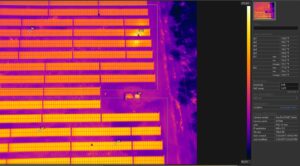
Monitoring of Construction
According to the traditional methods, it was quite challenging to monitor the progress of construction of solar panels in the region. A team of precise engineers and land surveyors where is sent on ground to check the updates of the construction time to time. The advent of drone technology has basically made it easy to monitor the progress of construction of solar panels. Drones in solar industry have basically helps in providing advanced surveillance where drones can be sent at any time of the day to keep a check on the progress of the construction of solar panels and helps in regular scanning and detection of problems. Drones for solar farms make it a point in ensuring that the best results are served to its consumers.
Drones for solar farms inspection
Drones in solar industry basically helps in inspection of the region where the solar panels are placed. They help in detecting any animal is and report the same in no time. Hence, proper support can be provided to the solar panel industry. Hence reducing the time of investigation and providing on the spot results. we need to understand that one of the major issues of solar panels ever since their introduction is that even if they tend to reduce the carbon emissions and are extremely sustainable they are very fragile. Drones for solar farms basically helps in spotting where exactly has the damage been created and providing solutions to it as soon as possible. This basically helps in ensuring performance peak levels and reduces the likelihood of costly and disruptive errors at later stages. Drones for solar farm inspection are sent annually and monthly sometimes to make sure that the inspection happens on time and the damage squad at short notice.
Measuring the peak performance
Remote sensing basically makes it a point to meet the commitment and the necessity of employees working at dangerous situations. Previously, it was observed that employees used to risk their lives. Climb up on rooftops to check the solar panels and report any damages. Drones in the solar industry have basically helped in regular inspection as well as electrical substation monitoring at regular intervals. Drones helps in pin pointing minute errors quicker than manual methods. Drones are also capable of providing thermal readings and zooming into each and every single panel specifically and smoothly without any hesitation.
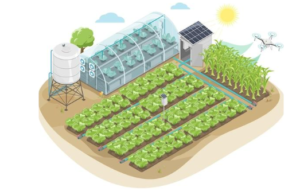
Accessible and Actionable Data
With the arrival of artificial intelligence and machine learning, drone technology has speed up the process in providing accessible and actionable date. It is said that drones in solar industry identify problems with solar panels, 80% faster than a group of engineers can do. This has basically helped in making the process not only time efficient but also cost-effective and hence choosing drones over a bunch of people has been pretty much helpful.
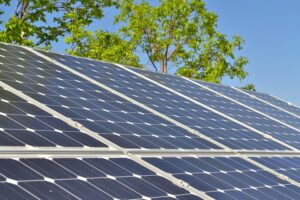
5 BENEFITS OF DRONES FOR SOLAR POWER
Drones in solar industry also tend to provide tons of benefits as their usage is increasing. Let’s understand a few.
Improving the levels of safety
It is always easier to send a drone for inspection, then actually sending a team of technicians and making sure they’re safe. Climbing up on roofs full of solar panels, which is located at a tremendous height makes it difficult and is also scary at the same time. Hence, drones for solar farms has basically reduced the threats as well as improve the safety. Similarly, direct contact of human weight open combiners and inverters can be difficult. If the same thing has been scanned from aerial methods, it becomes easy and safe for everyone involved in the process.
Reduction of labor costs
It was since people started following the Motto of sending drones on ground instead of feet, the tons of money that was basically spent on employing some laborers to do the work has reduced. It has also increased the precise data that is getting captured and is also cutting short the time.
Increase in efficiency
Drones for solar farms inspection has increased the amount of efficiency in data collection than it happened in traditional ways. Drones easily conduct highly efficient inspections by procuring data of larger sites in very less time as well as providing high-resolution images.
Increase in visibility
Getting the birds eye view perspective with the help of drones in solar industry has basically helps in procuring data with minute perfection. In case of manual inspections, it used to get very difficult for every individual to inspect each and every part of the solar panel. Drones in solar industry have basically enhanced the entire process, by reducing the issues to granular level, and with better comprehensive visibility, as well as simple and clear understanding of the visual data.

Storing and retrieving all types of data
Drones in solar industry have basically upgraded the method of data collection. Today drones survey large hectares of land and provide an average of 10 X times faster data, then one person could actually do manually. With the efficiency of time consumption, the precision that comes in has also increased. This has made the process convenient as well as the timely reporting of the drone data has help for future references. a prospectus of establishing personalized trends of data that is in-depth has made it viable for future decision-making. The earlier data can also be cross verified with the current data so that the changing aspects of the information can be understood as well as the inefficiencies can be resolved.
Now that we have understood how drones in solar industry or benefiting the construction of solar panels as well as the benefits of drone data. Let’s understand the micro problems that R analyzed by drones in solar panels.
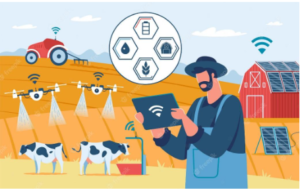
4 COMMON SOLAR PANELS DEFECTS UNDERSTOOD DURING DRONE INSPECTION
Hotspots are basically the places or region on a solar panel which gets overloaded and tends to become a warmer which can either lead to a short circuit or lack of performance in its lifespan.
Micro-cracks. This might be either due to the low production, quality or lack of handling or improper production or shipping. In the earlier stages, micro cracks do not create a problem but might grow over a time and can hinder the process of providing sufficient energy.
Snail trail contamination. This is basically the initial stage of micro cracks. Now these are not just limited to one part of the solar panel. It basically starts spreading all over the region and causes defect front metallisation silver Best in the solar cell production.
PID effect. This is the damaging of the solar cells and the reduction of the yield on a yearly basis.
CONCLUSION:
On concluding, we understand that drones for solar farms has been the most innovative and upgrading tool to provide information and inspection at the least possible time and also extremely cost-effective. Drones in solar industry have not only taken a toll but also helps in speeding up the processes so that more and more areas can develop the idea of solar panel construction as well as the goal of sustainable development can be achieved.

